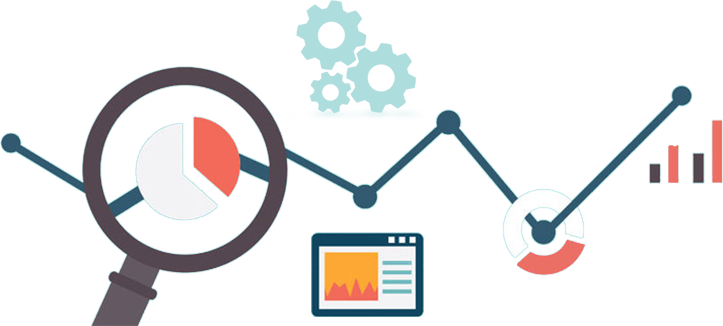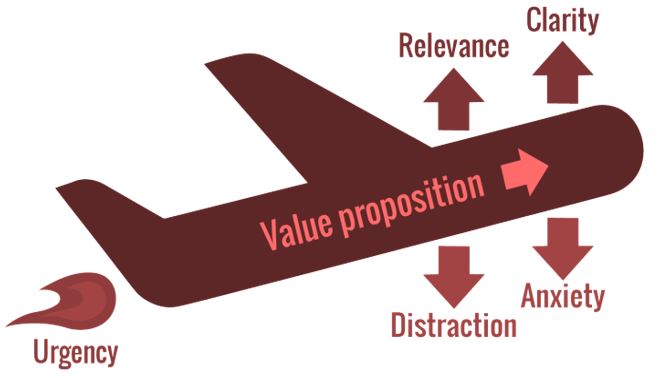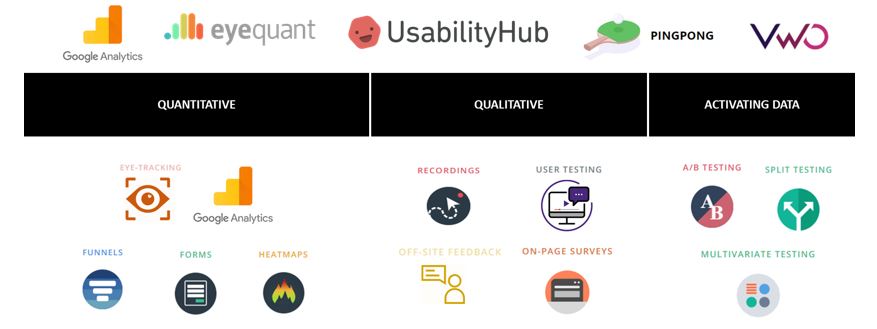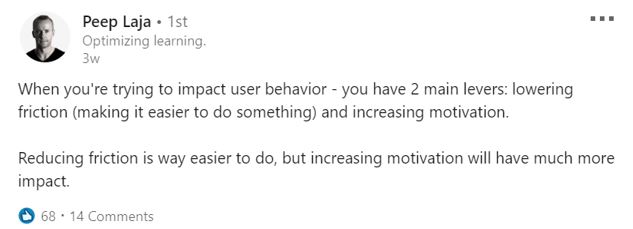
An Introduction to CRO
Intro
Many misconceptions around the purpose and value of CRO still exist. I’m sure any CRO practitioner will back me up on this, whenever trying to explain my role to friends or colleagues, the inevitable reply follows a similar pattern, “Oh yeah, I heard someone once changed the colour of a button and made £££”. 😐
Yes, there are plenty of old case studies that tell similar tales, but when checking the validity of these results, I think you’d struggle to find a recent example. Things have progressed a lot from the early days of conversion optimisation. And with an average A/B test success rate of “one in every seven” (VWO) it is increasingly important to push the ‘best practices’ to one side in order to really understand what your specific conversion blockers are.
LIFT model
One conversion model that helps you do just that is the LIFT Model (Developed by Wider Funnel). This provides a CRO framework, showing the six conversion factors that allow you to evaluate landing pages from the perspective of your users.

Conversion Facilitators
- Value Proposition
The most important conversion factor, this is our vehicle for conversion. Without a clear value proposition, we would not be providing our users with a reason why they should convert, or why we differ from competitors.
- Relevance
Relevance is one of the most important conversion factors for landing pages. To be relevant, the message should match the user intent. More specifically, does the page message match what the user will have searched to reach this page. The page must use terms the visitor relates to & provide consistency with incoming links otherwise the user will be likely to leave.
- Clarity
Clarity refers more to the design & content structure of a page. Does the design present a clear ‘eye flow’ and is there a clear, defined action for the user to take on this page? An effective landing page will articulate the value proposition and call to action with clarity.
- Urgency
As visualised in the diagram, the urgency factor helps propel or enhance our value proposition.
There are two different types of urgency: Internal & External. Internal refers to factors that impact the users’ intent prior to their arrival on the website – for example, shopping for a pair of shoes that are required for an event at the weekend. Whereas external urgency can be introduced to the user upon arrival to the website via the use of tone, offers or deadlines associated with products.
Conversion Inhibitors
- Anxiety
Anxiety is a by-product of lack of trust or credibility that has been built throughout the users experience on site. From the users’ perspective, what are the potential doubts or concerns about undertaking the conversion on this website – is there anything that can be done to address these to ease their conversion anxiety?
- Distraction
Simply put, the more visual clutter, links, options and irrelevant information you deliver to your users, the more likely they are to be distracted and diverted from completing their conversion goals. Minimising distractions, especially as the user passes further down the conversion funnel, will be a key factor to increasing the overall conversion rate.
Within each of these six factors lie the key themes that a test hypothesis will be formed around. However, to ensure we have an efficient and effective testing program, much more data and research is required before developing these test hypotheses.
For example, data might suggest that there is an opportunity to optimise our enquiry form page as our current conversion rate for users entering the page is only 5% compared with an industry average of 15%. By using the LIFT model, we identify that the value proposition could be strengthened and that there are potentially too many form fields that are not necessary (causing anxiety).
This information is a great starting point, but we need to validate this information with data from analysing what our users are actually doing on this page.
In this example, a mixture of Heatmaps and Session Recordings uncovered an unusual behaviour pattern. Users were being distracted by some static information that they believed would be dynamic, thus becoming frustrated and leaving the enquiry form page. For this case, if we hadn’t validated our initial findings with first-hand interaction data, our A/B tests would have been focused on streamlining the form and improving the value proposition. Even though these tests areas may be key to improving conversion, tested in this order they would have had little or no impact, as the main distraction and frustration would still exist.
It’s important to note that, even though the value proposition is our vessel and, in many respects, the most important factor for conversion. If we have poor performance across the other conversion factors, users will not convert or will not be able to convert, even if they want to.
Focus on FUDs
For this reason, it often makes sense to focus early optimisation on usability issues. When conducting user research, these issues can be represented by the acronym FUD – Fears, Uncertainties & Distractions. But how do we uncover the FUDs?
In order to do so, we have built a stringent tech stack that allows us to gain quantitative and qualitative data across our users’ journeys – as well as activate this data to capitalise on conversion uplift.

Motivation
“When you’re trying to impact user behaviour – you have 2 main levers: lowering friction (making it easier to do something) and increasing motivation. Reducing friction is way easier to do, but increasing motivation will have much more impact.” – Peep Laja (Founder CXL)

So once we have reached the stage of maturity with our ‘usability tests’ – when we are happy with the user journey as a whole and confident that when users want to complete an action, they can do so with ease – it is time to progress to the next phase of optimisation, increasing user motivation.
As this phase of the optimisation process is grounded in deep understanding of the target users, the research is very qualitative in nature and therefore takes a lot more time and effort to master. From the diagram above, our use of tools like UsabilityHub, PingPong & VWO surveys are essential to gain actionable insights about our users’ motives and drivers.
With an underpinning of these motivations, as soon as our data analysis highlights a conversion opportunity, test hypothesis will be formed around the theme of increasing motivation. Successful tests validate the hypothesis which build credibility to the data gathered in the research phase. This then becomes very valuable insights which can be harnessed for advanced personalisation testing, and in the case of a multi-channel digital agency like ourselves, shared with our other marketing acquisition channels in order to further optimise across the board.
Final Word
With a structured CRO program grounded in deep understanding of the user, we have managed to achieve an A/B test success rate of 1 in every 2 for our clients – well above the industry norm of 1 in every 7 reported by VWO.
The approach we take on Conversion Rate Optimisation is related to the one used in Experience Optimisation. Channel unification and optimisation of the brand throughout the entire customer journey. Nowadays we need to use customer centric approaches and forget about silos; channels work better together. To the user, the journey should be as seamless as possible, it is our job as marketers to use the data provided by the channels to optimise all possible user journeys without the user noticing.
In highly competitive markets it is important to always be on top, and do to this you need to test, try, experiment. Markets change, users change, offering change, you need to keep up.
According to the Econsultancy 2018 Optimisation Report “More than nine in ten (91%) company respondents expect to increase the number of experiments they run over the coming 12 months.”
This shows how important it is for companies to start developing structured approaches to optimisation. Specially when according to VWO, “only 31% of online UK businesses are actually carrying out data-driven conversion rate optimisation (CRO) and that many advertisers are unsure as to what CRO testing actually involves.”
Sources:
https://www.smartinsights.com/user-experience/ux-cx-and-cro-trends-2019-digital-experience-management/
https://www.redeyeoptimisation.com/insights/blog/metamorphosis-of-cro
https://vwo.com/blog/cro-industry-insights/
https://www.widerfunnel.com/lift-model/
https://www.activewin.co.uk/blog/the-importance-of-cro-and-experience-in-psychology/






